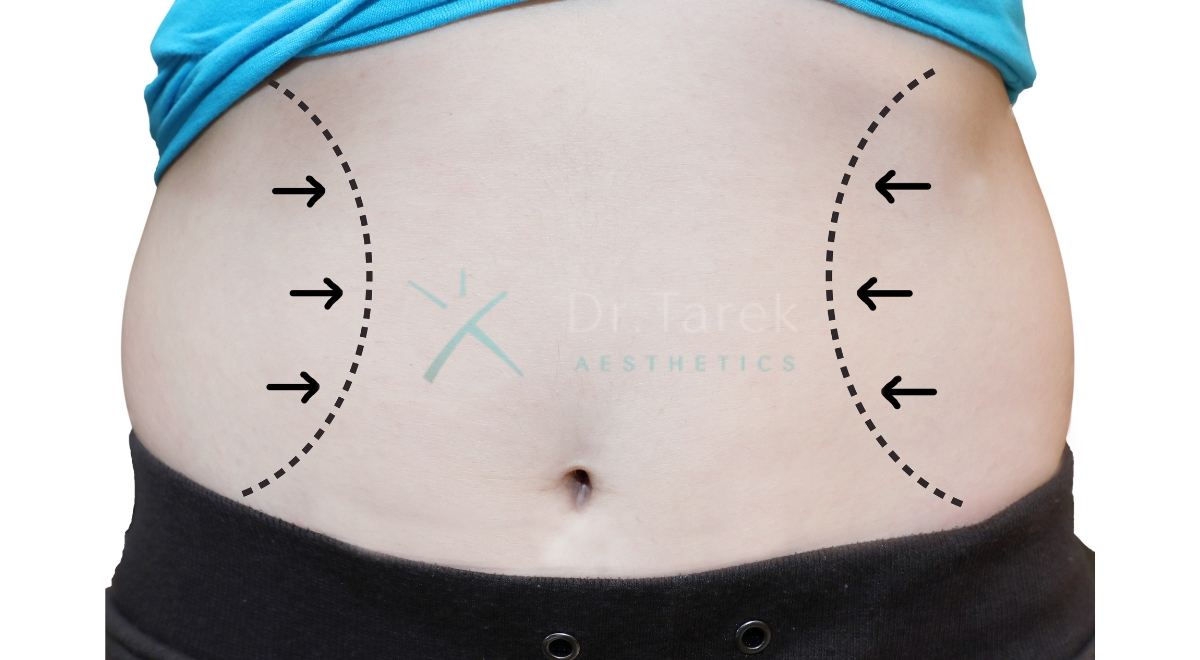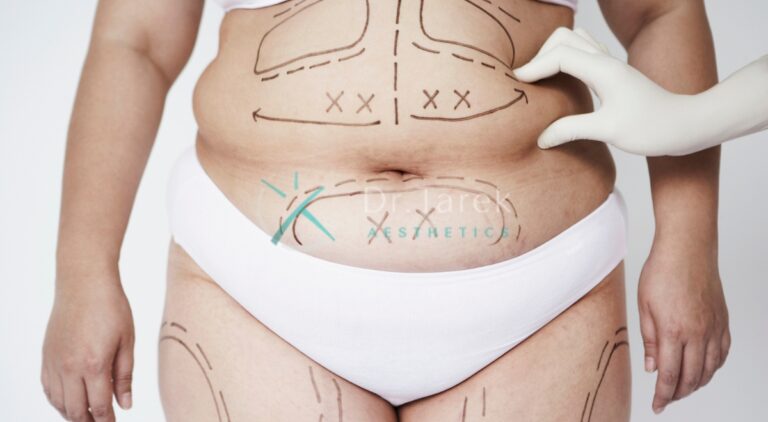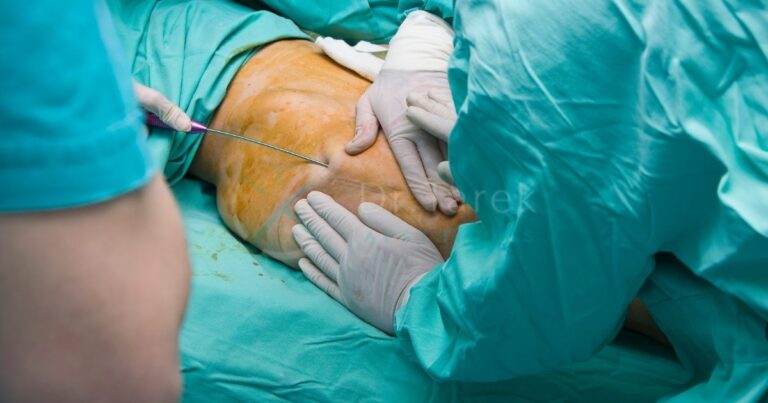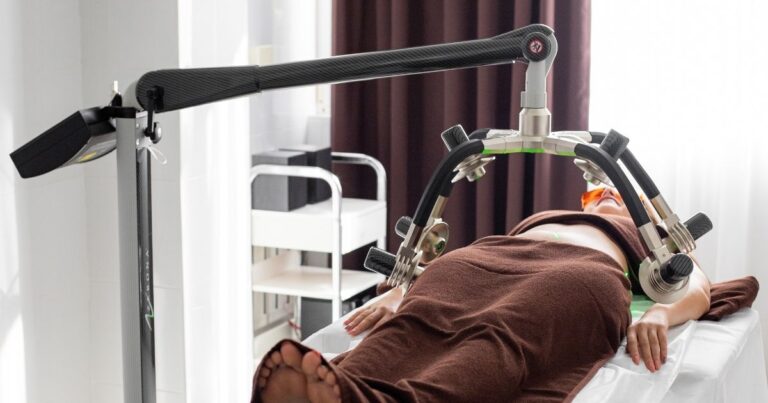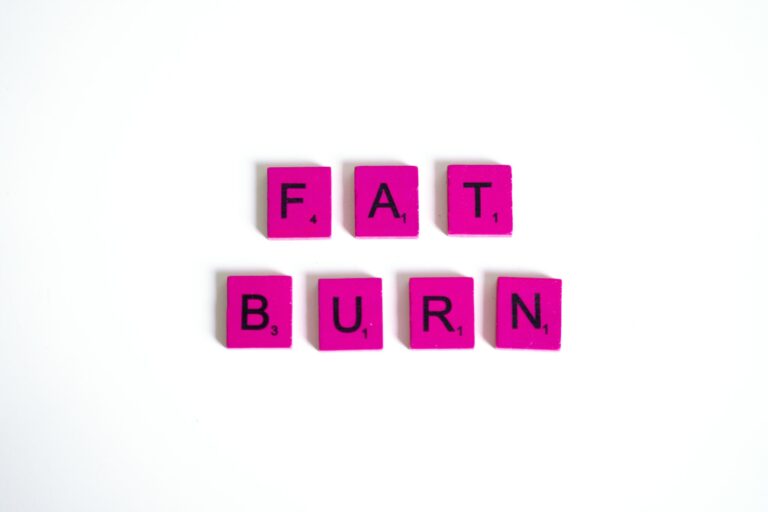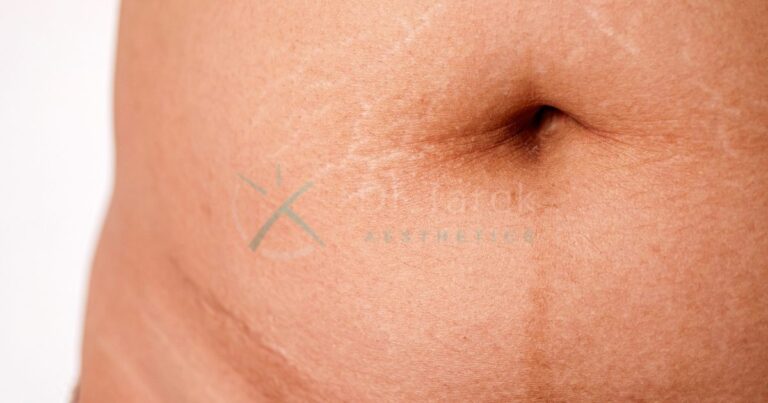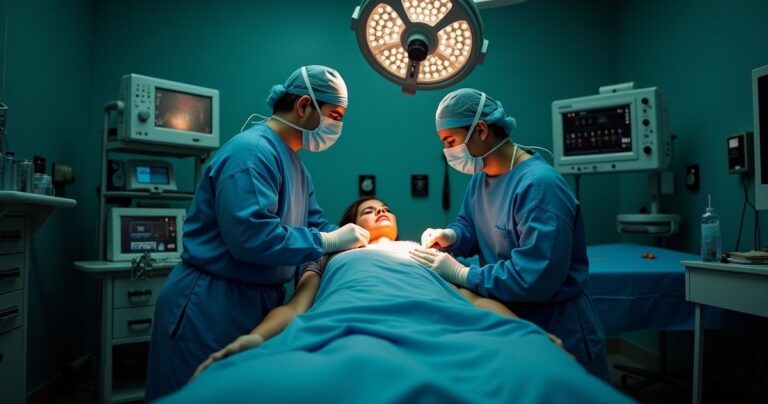When is Liposuction Necessary?
What is Liposuction?
Liposuction is a surgical procedure designed to remove excess fat deposits from specific areas of the body. This cosmetic technique aims to reshape and contour the body, improving its overall appearance. Dr. Tarek, a renowned plastic surgeon, explains that liposuction is not a weight-loss solution but rather a method to target stubborn fat pockets resistant to diet and exercise.
Dubai Cosmetic Surgery offers advanced beauty treatments for people who want to change their looks
many people travel to Dubai Cosmetic Surgery clinics for high-quality procedures and skilled doctors
Common Treatment Areas
Liposuction can be performed on various parts of the body, including:
- Abdomen
- Thighs
- Hips
- Buttocks
- Arms
- Neck
- Chin
These areas often accumulate fat that doesn’t respond well to traditional weight loss methods, making them ideal candidates for liposuction treatment.
Cosmetic vs. Medical Liposuction
While liposuction is primarily known for its cosmetic applications, it can also serve medical purposes. Cosmetic liposuction focuses on enhancing physical appearance, whereas medical liposuction addresses health-related issues. Some medical conditions that may benefit from liposuction include:
Book A Consultation With Dr Tarek Bayazid
Top-rated Plastic Surgeon For Liposuction in Dubai
Installment Plan Available
- Lipomas (benign fatty tumors)
- Gynecomastia (enlarged male breasts)
- Lipodystrophy (abnormal fat distribution)
| Cosmetic Liposuction | Medical Liposuction |
| Improves appearance | Addresses health issues |
| Targets stubborn fat | Treats specific conditions |
| Enhances body contour | Improves quality of life |
When is Liposuction Necessary?
Determining when liposuction is necessary depends on various factors, including individual goals, health status, and the nature of the fat deposits. It’s essential to consult with a qualified medical professional to assess whether liposuction is the right choice for your specific situation.
Criteria for Medically Necessary Liposuction
Medically necessary liposuction is typically considered when:
- The procedure addresses a diagnosed medical condition
- Conservative treatments have failed to provide relief
- The patient’s quality of life is significantly impacted
In these cases, liposuction may be deemed necessary to improve the patient’s overall health and well-being.
Cosmetic Indications for Liposuction
Cosmetic liposuction is often sought when:
- Diet and exercise have not yielded desired results
- Specific areas of the body have disproportionate fat deposits
- Body contouring is desired for aesthetic reasons
It’s important to note that cosmetic liposuction is an elective procedure and should be carefully considered in consultation with a board-certified plastic surgeon.
Noncosmetic Indications for Liposuction
Noncosmetic indications for liposuction may include:
- Treatment of lipedema (abnormal fat accumulation in legs)
- Removal of lipomas (benign fatty tumors)
- Management of lymphedema (swelling due to lymph fluid buildup)
These conditions may require liposuction as part of a comprehensive treatment plan to alleviate symptoms and improve overall health.
Liposuction for Obesity 
Liposuction is not a primary treatment for obesity. It’s crucial to understand that this procedure is not designed for significant weight loss but rather for body contouring and addressing specific areas of fat accumulation.
Obesity and Liposuction
Obesity is a complex medical condition that requires a multifaceted approach to treatment. While liposuction can remove some excess fat, it is not a substitute for a healthy lifestyle, proper nutrition, and regular exercise. Dr. Tarek emphasizes that patients considering liposuction for obesity-related concerns should first focus on achieving a stable, healthy weight through traditional methods.
Medically Necessary Liposuction for Obesity
In rare cases, liposuction may be considered medically necessary for obese patients if:
- There are localized fat deposits causing functional impairment
- Other weight loss methods have been unsuccessful
- The procedure is part of a comprehensive obesity treatment plan
However, these situations are uncommon, and liposuction should not be viewed as a primary obesity treatment.
Alternatives to Liposuction for Obesity
For individuals struggling with obesity, several alternatives to liposuction may be more appropriate:
- Bariatric surgery (e.g., gastric bypass, sleeve gastrectomy)
- Medically supervised weight loss programs
- Lifestyle modifications, including diet and exercise
- Behavioral therapy for weight management
| Obesity Treatment Option | Description | Effectiveness |
| Bariatric Surgery | Surgical procedures to reduce stomach size or alter digestion | High for significant weight loss |
| Medically Supervised Weight Loss | Structured programs with medical oversight | Moderate to high with adherence |
| Lifestyle Modifications | Changes in diet and exercise habits | Effective for long-term weight management |
| Behavioral Therapy | Addressing psychological aspects of weight gain | Beneficial when combined with other methods |
Liposuction for Cellulite
Cellulite is a common concern for many individuals, particularly women. However, it’s important to understand that liposuction may not be the most effective solution for this issue.
Understanding Cellulite
Cellulite is characterized by dimpled, lumpy skin, typically appearing on the thighs, buttocks, and hips. It results from fat deposits pushing through connective tissue beneath the skin. Factors contributing to cellulite include:
- Genetics
- Hormonal changes
- Age
- Lifestyle factors
Effectiveness of Liposuction on Cellulite
Liposuction is generally not considered an effective treatment for cellulite. While it can remove excess fat, it does not address the underlying structural causes of cellulite. In some cases, liposuction may even worsen the appearance of cellulite by creating uneven contours.
Alternative Treatments for Cellulite
Several alternative treatments may be more effective for addressing cellulite:
- Radiofrequency therapy
- Acoustic wave therapy
- Subcision
- Topical treatments
- Massage and lymphatic drainage
These methods target the structural components of cellulite and may provide more satisfactory results compared to liposuction.
Liposuction Treatment Areas 
Liposuction can be performed on various parts of the body to address specific concerns and achieve desired contours.
Common Areas for Liposuction
Popular treatment areas for liposuction include:
- Abdomen
- Flanks (love handles)
- Thighs (inner and outer)
- Buttocks
- Arms
- Back
- Chest (for men with gynecomastia)
Each area requires specific techniques and considerations to ensure optimal results and patient safety.
Liposuction Under Chin
Submental liposuction, or liposuction under the chin, is a popular procedure to address double chin concerns. This technique can:
- Improve jawline definition
- Reduce the appearance of a double chin
- Enhance overall facial profile
The procedure is typically performed using small incisions and specialized cannulas to minimize scarring and ensure precise fat removal.
Liposuction for Abdominal Fat
Abdominal liposuction is one of the most common applications of this procedure. It can help:
- Flatten the stomach area
- Reduce love handles
- Enhance waistline definition
However, it’s important to note that abdominal liposuction is not a substitute for weight loss or a tummy tuck procedure, which addresses excess skin and muscle laxity.
How to Minimize Risks
To reduce the likelihood of complications, patients should:
- Choose a board-certified plastic surgeon with extensive experience in liposuction
- Disclose all medical conditions and medications to the surgeon
- Follow pre-operative guidelines, including stopping certain medications if advised
- Maintain a healthy lifestyle before and after the procedure
- Adhere to all post-operative care instructions
Long-term Outlook After Liposuction
The long-term results of liposuction can be highly satisfactory when the procedure is performed by a skilled surgeon and the patient maintains a stable weight. However, it’s important to understand that:
- Results may take several months to fully manifest
- Weight gain can affect the outcome
- Skin elasticity plays a role in final contouring
- Aging and lifestyle factors can influence long-term results
Patients should have realistic expectations and commit to a healthy lifestyle to maintain their liposuction results over time.
How to Prepare for Liposuction
Proper preparation is key to ensuring a successful liposuction procedure and optimal recovery.
Pre-Procedure Guidelines
Before undergoing liposuction, patients should:
- Undergo a comprehensive medical evaluation
- Stop smoking at least four weeks before surgery
- Avoid certain medications and supplements as advised by the surgeon
- Maintain a stable weight
- Arrange for post-operative care and transportation
Following these guidelines can help minimize risks and improve the overall outcome of the procedure.
Finding a Qualified Medical Practitioner
Choosing the right surgeon is crucial for a safe and successful liposuction experience. Patients should:
- Verify the surgeon’s board certification and credentials
- Review before-and-after photos of previous patients
- Ask about the surgeon’s experience with specific liposuction techniques
- Ensure the facility is accredited for surgical procedures
- Feel comfortable communicating with the surgeon and their staff
Suitability for Liposuction
Not everyone is an ideal candidate for liposuction. Suitable candidates typically:
- Are within 30% of their ideal body weight
- Have good skin elasticity
- Are in good overall health
- Have realistic expectations about the procedure’s outcome
- Are committed to maintaining a healthy lifestyle post-surgery
A thorough consultation with a qualified plastic surgeon can help determine if liposuction is appropriate for an individual’s specific situation.
What to Expect During the Procedure
Understanding the liposuction process can help patients feel more prepared and at ease on the day of their procedure.
Suction-Assisted Liposuction Procedure
The traditional suction-assisted liposuction procedure typically involves:
- Administration of anesthesia
- Making small incisions in the treatment area
- Injection of tumescent solution to minimize bleeding and discomfort
- Insertion of a cannula to break up and suction out fat cells
- Closing incisions and applying compression garments
The exact technique may vary depending on the specific area being treated and the surgeon’s preferred method.
Anesthesia and Pain Management
Liposuction can be performed under various types of anesthesia, including:
- Local anesthesia with sedation
- General anesthesia
The choice of anesthesia depends on the extent of the procedure, patient preferences, and the surgeon’s recommendation. Pain management during and after the procedure is an important aspect of the treatment plan.
Duration and Recovery Time
The duration of a liposuction procedure can vary widely depending on the areas being treated and the amount of fat being removed. Typically, the procedure can take anywhere from 1 to 4 hours.
Recovery time also varies, but patients can generally expect:
- 1-2 weeks of initial recovery before returning to work
- 4-6 weeks before resuming strenuous activities
- Several months for final results to become fully apparent
It’s important to follow the surgeon’s post-operative instructions carefully to ensure proper healing and optimal results.
Post-Procedure Care
Proper post-procedure care is essential for a smooth recovery and optimal results following liposuction.
Self-Care After Liposuction
After the procedure, patients should:
- Wear compression garments as directed by the surgeon
- Take prescribed medications for pain management and infection prevention
- Keep incision sites clean and dry
- Avoid strenuous activities for the recommended period
- Stay hydrated and maintain a healthy diet
Following these self-care guidelines can help minimize discomfort and promote proper healing.
Immediate Aftercare
In the first few days following liposuction, patients should:
- Rest and elevate the treated areas when possible
- Apply cold compresses to reduce swelling
- Monitor for any signs of infection or unusual symptoms
- Attend follow-up appointments as scheduled
It’s normal to experience some swelling, bruising, and discomfort during this period, but these symptoms should gradually improve.
Long-term Care and Maintenance
To maintain the results of liposuction long-term, patients should:
- Maintain a stable weight through diet and exercise
- Stay hydrated and eat a balanced diet
- Protect the skin from sun damage
- Consider non-invasive treatments for skin tightening if necessary
- Attend regular check-ups with their plastic surgeon
Committing to a healthy lifestyle is key to preserving the results of liposuction over time.
Costs and Insurance Coverage
Understanding the financial aspects of liposuction is an important part of the decision-making process for many patients.
Costs of Liposuction
The cost of liposuction can vary widely depending on factors such as:
- Geographic location
- Surgeon’s experience and reputation
- Number and size of areas being treated
- Type of anesthesia used
- Facility fees
On average, patients can expect to pay between $2,000 and $10,000 for liposuction, with more extensive procedures costing more.
Does Medicare Cover Liposuction?
Medicare generally does not cover liposuction when it is performed for cosmetic reasons. However, in rare cases where liposuction is deemed medically necessary, such as for the treatment of lipedema, Medicare may provide coverage. Patients should consult with their healthcare provider and insurance representative to determine potential coverage.
Other Options for Covering the Cost of Liposuction
For patients who don’t have insurance coverage for liposuction, there are several options to consider:
- Financing plans offered by the surgeon’s office
- Medical credit cards
- Personal loans
- Health savings accounts (HSAs) or flexible spending accounts (FSAs)
It’s important to carefully review the terms of any financing option and consider the long-term costs before making a decision.
Frequently Asked Questions
When is Liposuction Necessary for Medical Reasons?
Liposuction may be considered medically necessary when it’s used to treat certain health conditions. These can include lipedema, a chronic disorder characterized by abnormal fat accumulation in the legs, or gynecomastia, which involves excess breast tissue in men. In such cases, liposuction can help alleviate pain, improve mobility, and enhance quality of life.
Can Liposuction Help with Weight Loss?
Liposuction is not intended as a weight loss solution. While it can remove localized fat deposits and improve body contours, it’s not effective for overall weight reduction. The procedure is best suited for individuals who are at or near their ideal weight but struggle with stubborn fat pockets that don’t respond to diet and exercise.
What Are the Alternatives to Liposuction?
There are several alternatives to liposuction, depending on the specific concerns and goals of the patient. Non-invasive body contouring treatments like CoolSculpting or SculpSure can reduce fat without surgery. For those seeking overall weight loss, bariatric surgery or medically supervised weight loss programs may be more appropriate. Additionally, lifestyle changes, including a balanced diet and regular exercise, remain the foundation of healthy weight management.
How Do I Know if I Am a Good Candidate for Liposuction?
Good candidates for liposuction are typically individuals who are at or near their ideal weight, have good skin elasticity, and are in overall good health. They should have realistic expectations about the procedure’s outcomes and be committed to maintaining a healthy lifestyle post-surgery. A consultation with a board-certified plastic surgeon is the best way to determine if you’re a suitable candidate for liposuction.
What Should I Ask My Surgeon Before Liposuction?
Before undergoing liposuction, it’s important to have a thorough discussion with your surgeon. Key questions to ask include: What are your qualifications and experience with liposuction? What technique do you recommend for my specific case? What results can I realistically expect? What are the potential risks and complications? How long will the recovery process take? Asking these questions can help you make an informed decision and feel more comfortable with the procedure.
